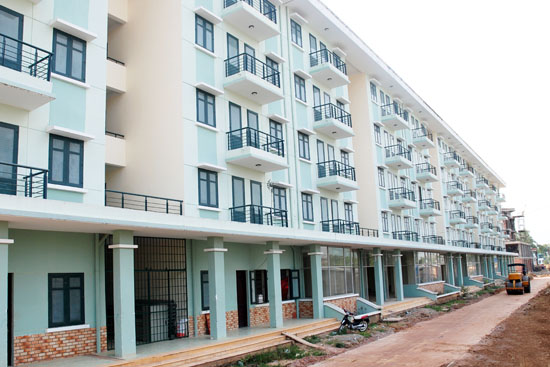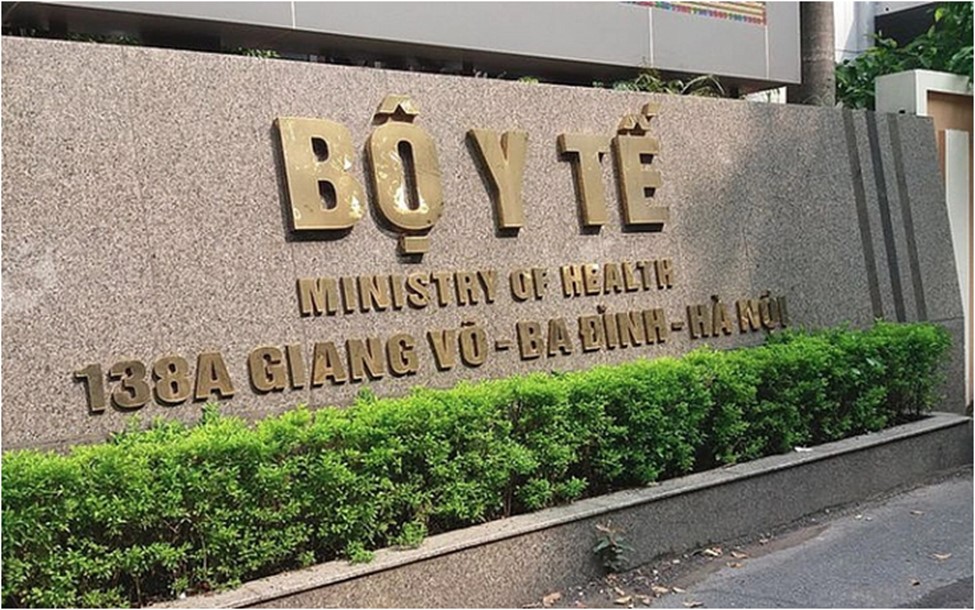Personal Income Tax is one of the essential issues that many people are concerned about. However, not everyone knows how to calculate their personal income tax in Vietnam. Below is a simple method to calculate personal income tax that everyone needs to know.

Simple method to calculate personal income tax in Vietnam that everyone needs to know (Illustration)
According to Clause 1, Article 2 of the Personal Income Tax Law, taxpayers in Vietnam subject to PIT include:
- Resident individuals with taxable income as regulated, arising within and outside the territory of Vietnam;
- Non-resident individuals with taxable income as regulated, arising within the territory of Vietnam.
FOR RESIDENT INDIVIDUALS IN VIETNAM
1. Basis and Formula for Calculating Personal Income Tax
According to the Personal Income Tax Law, the basis for tax calculation on income from business activities and salary/wages is taxable income and tax rate. The tax calculation formula is summarized as follows:
PIT Payable = Taxable Income * Tax Rate (1)
In which:
Taxable Income = Taxable Income – Deductions (2)
Taxable Income = Total Income – Non-Taxable Items (3)
2. Total Income from Salary, Wages
According to Clause 2, Article 2 of Circular 111/2013/TT-BTC, Article 11 of Circular 151/2014/TT-BTC, Article 11 of Circular 92/2015/TT-BTC, income from salary/wages includes:
- Salary, wages and allowances or subsidies similar to salary/wages in cash or non-cash forms;
- Allowances and subsidies, except for those specified by law;
- Remunerations in various forms such as: commissions from sales agencies, brokerage; participating in scientific, technical research projects; engaging in projects or schemes; royalties as regulated by law; engaging in teaching activities; participating in cultural, artistic, sports events; advertisement services; other services, other remunerations;
- Income earned from business association, board of directors of enterprises, supervisory boards of enterprises, project management boards, management councils, associations, professional associations and other organizations;
- Benefits in cash or non-cash forms outside of salary/wages paid by the employer which the taxpayer is entitled to in any form: housing, electricity, water, life insurance purchase,... as regulated;
- Bonuses in cash or non-cash forms by any means, including bonuses in shares, excluding the following bonuses:
+ Bonuses accompanying titles awarded by the state, including bonuses accompanying emulation titles, rewards according to law on emulation and rewards;
+ Bonuses accompanying national prizes, international prizes recognized by the State of Vietnam;
+ Bonuses for technical innovations, inventions recognized by competent state agencies;
+ Bonuses for detecting and reporting legal violations to competent state authorities.
3. Non-Taxable Items from Salary, Wages
According to Article 4 of the Personal Income Tax Law, point i of Article 3 of Circular 111/2013/TT-BTC, non-taxable income from salary, wages includes income from night work, overtime, paid higher than the regular daytime work, work within hours as specified by the Labor Code. To be specific:
- The part of salary/wages paid higher for night work, overtime is tax-exempt based on the actual salary/wages paid for night work, overtime minus (-) regular daytime work, work within hours' salary/wages.
Example: Ms. Hanh has a regular daily wage rate under the Labor Code of 50,000 VND/hour.
- In case of working overtime on regular days, she is paid 80,000 VND/hour, the tax-exempt income is: 80,000 VND/hour – 50,000 VND/hour = 30,000 VND/hour
- In case of working overtime on weekends or holidays, she is paid 100,000 VND/hour, the tax-exempt income is: 100,000 VND/hour – 50,000 VND/hour = 50,000 VND/hour
Note: Organizations, individuals paying income must make statements reflecting clearly the night work, overtime, additional wages for night work, overtime paid to employees. These statements are kept at the income-paying unit and presented upon request by tax authorities. Besides the above non-taxable items from salary, wages, employees are also exempt from tax calculation for the following incomes (if any): lunch, meal allowance, telephone, etc.
4. Deductions in Tax Calculation
* Family Circumstance Deductions:
According to Resolution 954/2020/UBTVQH14, the family circumstance deduction for taxpayers is 11 million VND/month (132 million VND/year), and for each dependent is 4.4 million VND/month.
Note: According to Article 19 of the Personal Income Tax Law and Article 12 of Decree 65/2013/ND-CP, dependents are individuals whom the taxpayer is responsible for supporting, including:
- Children (including biological children, legally adopted children, stepchildren of the wife, stepchildren of the husband) under 18 years old;
- Children (including biological children, legally adopted children, stepchildren of the wife, stepchildren of the husband) from 18 years old and older who are disabled and unable to work;
- Children (including biological children, legally adopted children, stepchildren of the wife, stepchildren of the husband) in college, higher secondary, professional secondary, vocational schools, including children from 18 years and older attending high schools with no income or income not exceeding the regulated amount in this Clause;
- Individuals out of working age, individuals within working age as regulated by law but disabled and incapable of working with no income or with income not exceeding 1,000,000 VND per month, including:
+ Spouse of the taxpayer;
+ Biological parents, step-parents, legal adoptive parents, parents-in-law of the taxpayer;
+ Other individuals with no support whom the taxpayer must directly support.
* Deductions for Insurance Contributions, Voluntary Pension Fund
- Insurance contributions include:
+ Social Insurance: 8%;
+ Health Insurance: 1.5%;
+ Unemployment Insurance: 1%;
+ Professional liability insurance for some professions required to participate in mandatory insurance.
- Contributions to voluntary pension funds: deductible from taxable income per actual expenditure but not exceeding 1 million VND/month (12 million VND/year).
* Deductions for Charity, Humanitarian Contributions, Promotion of Learning
- Contributions to organizations, facilities caring for children in particularly difficult circumstances, the disabled, indigent elderly; contributions to charitable, humanitarian, promotion of learning funds established and operated according to regulations;
- The maximum deduction shall not exceed taxable income from salary, wages, and business income of the tax year in question due to charitable, humanitarian, educational promotion contributions.
5. Tax Rate and Personal Income Tax Calculation Method
According to Article 22 of the Personal Income Tax Law and Article 14 of Decree 65/2013/ND-CP, the progressive tax rate schedule is as follows:
| Tax Bracket | Annual Taxable Income (million VND) | Monthly Taxable Income (million VND) | Tax Rate (%) |
| 1 | Up to 60 | Up to 5 | 5 |
| 2 | Over 60 to 120 | Over 5 to 10 | 10 |
| 3 | Over 120 to 216 | Over 10 to 18 | 15 |
| 4 | Over 216 to 384 | Over 18 to 32 | 20 |
| 5 | Over 384 to 624 | Over 32 to 52 | 25 |
| 6 | Over 624 to 960 | Over 52 to 80 | 30 |
| 7 | Over 960 | Over 80 | 35 |
According to Appendix No. 01/PL-TNCN issued with Circular 111/2013/TT-BTC, the progressive tax calculation method is specified as follows:
|
Bracket |
Monthly Taxable Income |
Tax Rate |
Tax Calculation |
|
|
Method 1 |
Method 2 |
|||
|
1 |
Up to 5 million VND |
5% |
0 million VND + 5% taxable income |
5% taxable income |
|
2 |
Over 5 million VND to 10 million VND |
10% |
0.25 million VND + 10% taxable income over 5 million VND |
10% taxable income - 0.25 million VND |
|
3 |
Over 10 million VND to 18 million VND |
15% |
0.75 million VND + 15% taxable income over 10 million VND |
15% taxable income - 0.75 million VND |
|
4 |
Over 18 million VND to 32 million VND |
20% |
1.95 million VND + 20% taxable income over 18 million VND |
20% taxable income - 1.65 million VND |
|
5 |
Over 32 million VND to 52 million VND |
25% |
4.75 million VND + 25% taxable income over 32 million VND |
25% taxable income - 3.25 million VND |
|
6 |
Over 52 million VND to 80 million VND |
30% |
9.75 million VND + 30% taxable income over 52 million VND |
30 % taxable income - 5.85 million VND |
|
7 |
Over 80 million VND |
35% |
18.15 million VND + 35% taxable income over 80 million VND |
35% taxable income - 9.85 million VND |
Example: Mr. Khoa signed a contract with Le Thanh LLC and receives the following incomes:
- Salary based on actual working days: 20,000,000 VND;
- Lunch allowance: 500,000 VND;
- Housing allowance: 500,000 VND.
Mr. Khoa has a 5-year-old child in school. How much is the PIT Mr. Khoa has to pay in a month?
Step 1. Calculate Total Income
Mr. Khoa's total income in the month: 20,000,000 + 500,000 + 500,000 = 21,000,000 VND.
Step 2. Calculate Non-Taxable Items
- Lunch allowance: 500,000 VND;
- Housing allowance: 500,000 VND.
Step 3. Calculate Taxable Income According to Formula (3)
Taxable Income = 21,000,000 – 500,000 – 500,000 = 20,000,000 VND.
Step 4. Calculate Deductions
Mr. Khoa contributes insurance based on salary: 20,000,000 as follows:
- SI: 20,000,000 * 8% = 1,600,000 VND;
- HI: 20,000,000 * 1.5% = 300,000 VND;
- UI: 20,000,000 * 1% = 200,000 VND.
Total insurance contributions: 1,600,000 + 300,000 + 200,000 = 2,100,000 VND.
- Mr. Khoa himself: 11,000,000 VND;
- Dependent: 1 small child: 4,400,000 * 1 = 4,400,000 VND.
Step 5. Calculate Taxable Income According to Formula (2)
Taxable Income = 20,000,000 – 2,100,000 – 11,000,000 – 4,400,000 = 2,500,000 VND.
Step 6. Calculate Tax Payable According to Formula (1)
Applying the progressive tax calculation method specified in Appendix No. 01/PL-TNCN issued with Circular 111/2013/TT-BTC, Mr. Khoa's taxable income of 2,500,000 falls into the first bracket in the tax schedule, so the calculation method is: 5% * taxable income.
Thus, the PIT Mr. Khoa has to pay in the month is: 5% * 2,500,000 = 125,000 VND.
FOR NON-RESIDENT INDIVIDUALS IN VIETNAM
According to Clause 1, Article 18 of Circular 111/2013/TT-BTC, PIT on income from salary, wages of non-resident individuals is determined by multiplying taxable income from salary, wages by the tax rate of 20%.
Above is the simple personal income tax calculation that everyone needs to know. Note, from July 1, 2020, people with an income of 11 million VND/month or more (132 million VND/year or more) without dependents must pay PIT.
Le Vy
- Key word:
- Personal income tax
- Vietnam
 Article table of contents
Article table of contents










.Medium.png)
.Medium.png)
.Medium.png)
.Medium.png)
